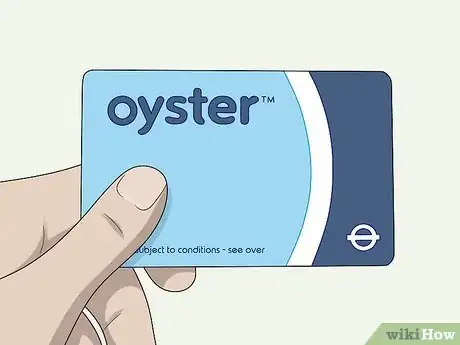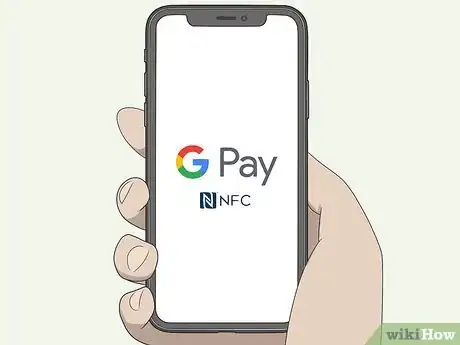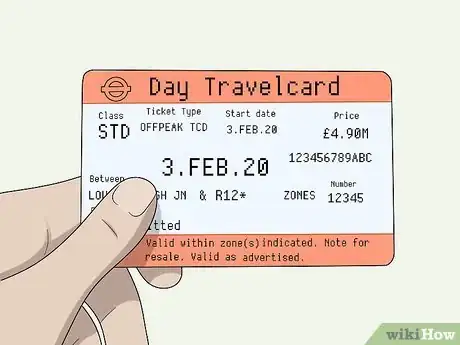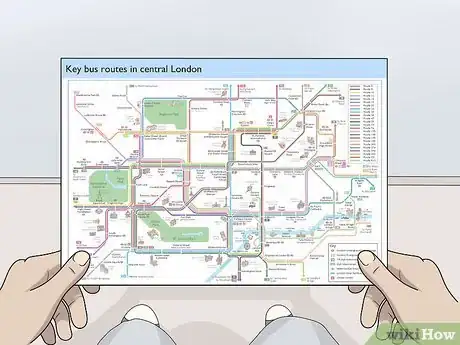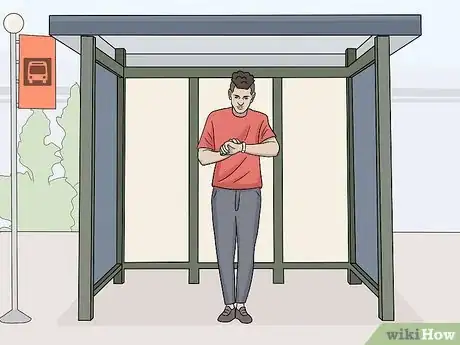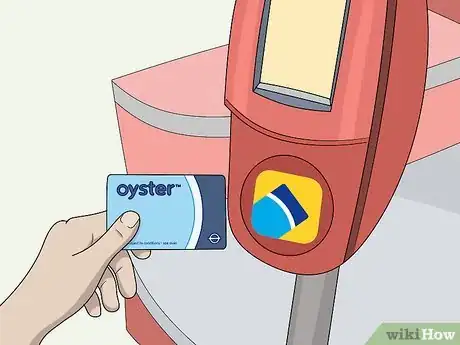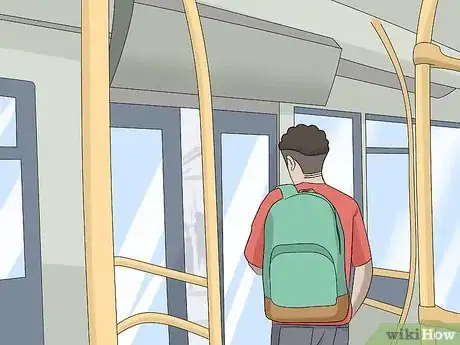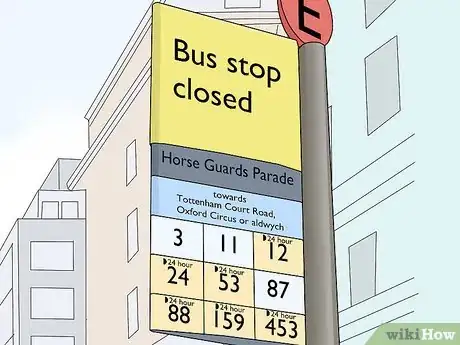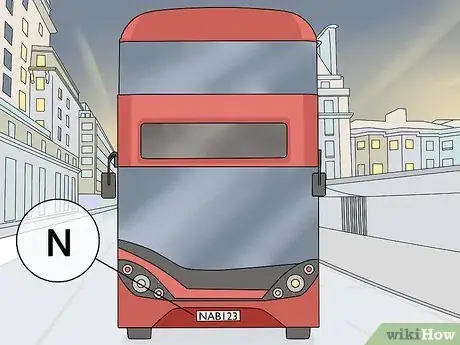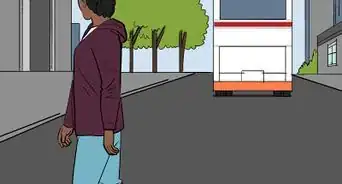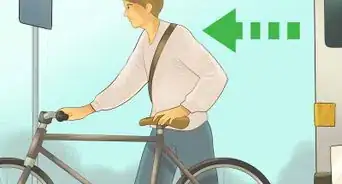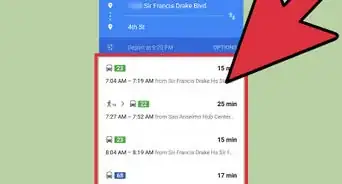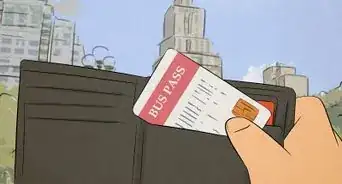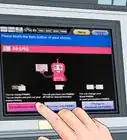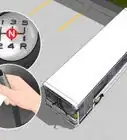This article was co-authored by wikiHow Staff. Our trained team of editors and researchers validate articles for accuracy and comprehensiveness. wikiHow's Content Management Team carefully monitors the work from our editorial staff to ensure that each article is backed by trusted research and meets our high quality standards.
There are 21 references cited in this article, which can be found at the bottom of the page.
This article has been viewed 10,488 times.
Learn more...
If you’re planning a trip to London, it can be helpful to know how to make use of the bus system, which is one of the most widely-used means of transportation in the bustling city. London buses are entirely "cashless," meaning the only way to pay your fare is to use a special citywide Oyster card, pre-loaded Travelcard, or contactless form of payment such as a debit card or mobile payment method. Fortunately, this makes the whole process quite simple. Once you've chosen your preferred payment method, catching a ride is as easy as touching in at the yellow reader terminal when you get on the bus.
Steps
Paying Your Fare
-
1Purchase an Oyster card for fast, convenient transportation. An Oyster card is a type of smart payment card used to pay for transportation in the UK. You can buy and load an Oyster card at any participating Oyster Ticket Stop, Visitor Centre, or Tube, overground, or rail station in the greater London area. You also have the option of ordering a card and managing your funds online.[1]
- With an Oyster card, you pay as you go by adding money to your card from a bank account or debit or credit card.
- To activate your Oyster card, you must pay a £5 deposit (visitor cards come with a non-refundable £5 activation fee). Your deposit will be refunded to you when you cancel the card.[2]
- London buses went “cashless” across the board in 2014, meaning the only way to pay is to use a special transportation card or contactless payment method.[3]
-
2Use a contactless payment method if you'd rather not bother with an Oyster card. If your debit card, credit card, or device is equipped for contactless payment, there’s no need to go to the trouble of buying and transferring funds to a separate Oyster card. Simply hold the chip on your card or device up to the yellow reader when you board the bus and be on your way![4]
- All buses within the city of London accept American Express, MasterCard, and Visa debit and credit cards, as well as online-only cards such as V PAY and Maestro.[5]
- It’s also possible to pay your fare using a mobile payment method like Apple Pay, Google Pay, Samsung Pay, Fitbit Pay, and Garmin Pay.
Advertisement -
3Buy a Travelcard if you plan on covering a lot of ground in a short period. Travelcards are sold at many of the same venues that carry Oyster cards, as well as online. Unlike an Oyster card, which charges you every time you take the bus, a Travelcard will allow you to make as many trips as you like within the timeframe of the plan you select. All you have to do is pick your preferred plan and make a one-time payment.[6]
- In addition to day passes, which cost around £12.70 for a single adult, there are also 7-day, 1-month, 3-month, 6-month, and annual Travelcards available for passengers who plan on doing a lot of regular traveling.[7]
- When you purchase a Travelcard, you’ll receive a paper ticket printed with the particulars of your chosen plan. Be sure to hold onto your ticket, as without it you won’t be admitted to any bus, Tube, tram, or railway.
Warning: Paying for a Travelcard will typically end up costing you more than using an Oyster card or contactless payment method unless you make more than about 3 trips per day for the duration of your travel plan.[8]
-
4Look up standard bus fare rates to help devise your travel budget. As of 2020, it costs £1.50 to hop on a bus in the city of London, no matter how far away your destination is. This single charge also entitles you to take an unlimited number of other buses within one hour at no additional cost. Even better, London bus fares are capped at £4.50 per day, provided you use the same payment method each time you board a new bus.[9]
- You’ll find these rates posted online and at any city bus stop in case you ever need to refer to them.
- Wheelchair users, mobile scooter users, and the visually-impaired are entitled to ride the buses in London free of charge.[10]
- Children under the age of 11 and visitors and residents who are 60 or older also qualify for free travel on red London buses at all times. This concession applies to the Tube, as well.[11]
Catching a Ride
-
1Head to the nearest bus stop. London is a fast-moving, densely-populated metropolis, which means you'll find a bus stop every couple of blocks within the city limits. When you arrive at the bus stop, check the overhead display board to see when the next bus is due in and where it’s going.[12]
- London bus stops are recognizable by their signature red-trimmed covered shelters, some of which are equipped with interactive digital route maps that update in real time.[13]
- Be sure to memorize the number of your bus so you can be looking for it when it shows up.
-
2Survey the citywide connections map to determine which route to take. At the bus stop, you'll have an opportunity to look over a series of maps depicting the various roadways that make up London's bus network. Take a moment to study these maps in detail. They're designed to be intuitive and easy to read, even if you're not well acquainted with the layout of the city.[14]
- Keep in mind that it may be necessary for you to make multiple connections if you have a long way to go.
- The city's transportation department office, Transport for London, offers a free online Journey Planner tool on their website. This could serve as a helpful navigational aid if you're unfamiliar with the area.[15]
Tip: Mobile apps like CityMapper, Transit App, and Moovit can also make it easy to find the bus stop closest to you and figure out exactly how to get where you’re going.[16]
-
3Wait for your bus to arrive. Stand somewhere inside the enclosed bus shelter, or take a seat to get more comfortable. Make sure you’re in a position where you can be seen easily. Otherwise, the bus may pass right on by without stopping.[17]
- London buses are handicap accessible, and can even be lowered for passengers who need help getting on.
- Once the bus is stopped, you’ll have around 20-60 seconds to hop on before the doors close and the bus continues on its way.
-
4Try hailing a bus if there isn’t a bus stop close by. In some parts of London, the buses operate on a “hail-and-ride” basis, which can be a major plus if you spot a bus going your way but aren’t near a bus stop. Simply hold up your arm to signal to the driver to pull over. Have your payment method in hand so you can pay your fare quickly and keep things moving.[18]
- There's no obvious way to tell whether a given bus offers hail-and-ride service. However, most of the ones that do are found in the rural outskirts of London, where passenger demand is scattered and there are few or no fixed stops.[19]
-
5Scan your preferred payment method as you board the bus. Hold your Oyster card or contactless form of payment up to the yellow reader terminal and wait for it to beep. This process is known as “touching in.” Once you’ve successfully touched in, find an open seat anywhere you like and settle in for the journey ahead.[20]
- The payment terminal is pretty hard to miss. It looks like a big, round, bright yellow button, and will be the first thing you see to your right upon climbing aboard.[21]
- If you're traveling on one of the city's iconic double-decker buses, feel free to make your way to the upper level using the rear staircase to hunt for a seat with a better view.
-
6Exit via the doors at the middle or rear of the bus once you arrive at your stop. When you hear the driver call out the name of your stop or see it appear on the overhead information screen, migrate to the back of the bus and be prepared to step off as soon as the doors open. Remember to disembark in an orderly fashion. You may have to wait for a few other passengers to clear out before its your turn to exit.[22]
- There’s no need to touch out when you reach your destination.
- If you’re on a hail-and-ride bus, press one of the large red “Stop” buttons built into the handrails to request to be let off at any point along the way.[23]
- Watch your step when getting off of the bus. The distance between the platform and the street or sidewalk isn’t especially high, but you could still lose your footing if you’re not careful.
-
7Watch out for closed stops on your way to and from your destination. Every now and then, you’ll come across a bus stop that’s been shut down due to road maintenance or public events like parades and big sporting events. When this happens, officials will place a bright yellow cover over the stop’s display board. Fortunately, there are stops every few blocks within the city limits, so you should never have too much trouble finding an alternative route.[24]
- If your stop is closed and you’re not sure where to go next, ask your driver for more information.
- If worst comes to worst, you can always use your contactless payment method of choice to take the Tube, a tram, or a taxi to your destination or the next open stop.
Getting the Most out of Your Trip
-
1Enjoy a scenic bus tour to see the city from street level. A bus ride can be the perfect way to do some low-cost sightseeing, especially if it’s your first time in London. Just sit back and let the driver chauffeur you through various parts of the city. Along the way, you’ll have an opportunity to witness many of the important cultural landmarks that make London one of the world’s most famous travel destinations.[25]
- For those seeking a public transportation experience with a little more flavor, there are even bus lines that offer tours with unique themes, such as London history, ghosts, culinary tourism, and Harry Potter.[26]
- All city buses accept fares paid through Oyster card and Travelcard. However, you may have to use a contactless form of payment to secure a seat on a privately-owned bus, like the kind that conduct guided or hop-on, hop-off tours.
Tip: If you don't want to pay extra for a guided tour, ordinary bus routes like 9, 11, 15, and 94 can provide you with a glimpse of many of London's most popular and commonly-visited locations.
-
2Hop a night bus for after-hours adventures. Many of the buses in London operate 24 hours a day, 7 days a week. This makes them invaluable for getting around later in the evening after the Tube closes and the overground railways stop making trips. To see whether a particular bus is running, look for the letter “N” to appear before the bus number on the digital display screen.[27]
- Night buses are strictly hail-and-ride, so you’ll need to signal the driver when you want to board or stop.
-
3Take advantage of unlimited bus travel within an hour of your first ride. One major perk of traveling by bus in London is the new "Hopper" fare rule, which says that the £1.50 you spend for your initial touch-in is good for a full hour of road time, regardless of how many different buses you take during that period. This means that if you need to make several connections to get to your destination, none of your subsequent trips will cost you a single pound.[28]
- Be aware that you'll still need to touch in on each bus you board. Once you do, however, your free fare will be applied automatically.[29]
- Between the hour of unlimited travel per day and the £4.50 daily price cap, you should be able to take in much of what the city has to offer without putting a dent in your wallet.
References
- ↑ https://tfl.gov.uk/fares/how-to-pay-and-where-to-buy-tickets-and-oyster
- ↑ https://www.londontoolkit.com/briefing/travelcard_oyster.htm
- ↑ https://www.independent.co.uk/news/uk/home-news/london-buses-will-go-cashless-on-6-july-9255312.html
- ↑ https://www.findingtheuniverse.com/pay-public-transport-london-oyster-contactless-best/
- ↑ https://tfl.gov.uk/fares/how-to-pay-and-where-to-buy-tickets-and-oyster/pay-as-you-go/contactless-and-mobile-pay-as-you-go?intcmp=55539
- ↑ https://www.londontoolkit.com/briefing/travelcard_oyster.htm
- ↑ https://tfl.gov.uk/fares/how-to-pay-and-where-to-buy-tickets-and-oyster/travelcards-and-group-tickets
- ↑ https://www.londontoolkit.com/briefing/travelcard_oyster.htm
- ↑ https://www.visitlondon.com/traveller-information/getting-around-london/london-bus
- ↑ https://www.transportforall.org.uk/public/bus/
- ↑ https://www.londontoolkit.com/briefing/buses.htm
- ↑ https://tfl.gov.uk/maps/bus?intcmp=40401
- ↑ https://www.citymetric.com/transport/14-things-we-learned-list-every-bus-stop-london-4005
- ↑ https://cdn.civitatis.com/guias/londres/fotos/buses.pdf?_ga=2.124331466.1541456786.1580924753-913970152.1579299823
- ↑ https://tfl.gov.uk/plan-a-journey/
- ↑ https://www.pastemagazine.com/blogs/lists/2014/12/10-must-have-apps-for-getting-around-without-a-car.html
- ↑ https://www.englishcentres.co.uk/blog/how-to-use-london-transport-using-the-bus
- ↑ https://tfl.gov.uk/modes/buses/using-buses-in-london
- ↑ https://www.visitlondon.com/traveller-information/getting-around-london/london-bus
- ↑ https://www.londonpass.com/london-transport/travelcard-validity.html
- ↑ https://www.visitlondon.com/traveller-information/getting-around-london/oyster-faqs/how-to-use-your-card
- ↑ https://www.englishcentres.co.uk/blog/how-to-use-london-transport-using-the-bus
- ↑ https://tfl.gov.uk/modes/buses/using-buses-in-london
- ↑ https://tfl.gov.uk/modes/buses/using-buses-in-london
- ↑ https://www.londontoolkit.com/whattodo/london_hoho_bus_discuss.html
- ↑ https://www.visitlondon.com/things-to-do/sightseeing/sightseeing-tours/bus-tour
- ↑ https://www.visitlondon.com/traveller-information/getting-around-london/london-bus
- ↑ https://www.london.gov.uk/what-we-do/transport/mayors-one-hour-hopper-fare
- ↑ https://www.londontoolkit.com/briefing/buses.htm
- ↑ https://www.englishcentres.co.uk/blog/how-to-use-london-transport-using-the-bus
